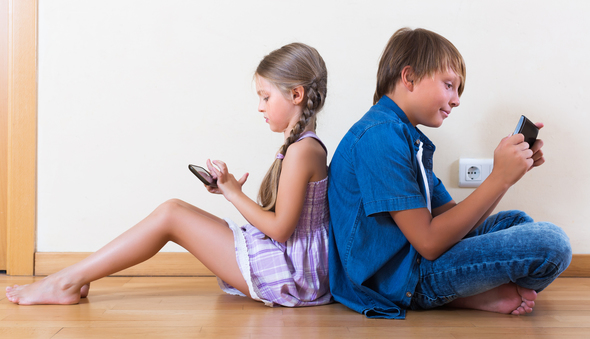
When a twelve-year-old in a Southborough, Massachusetts, boarding school began to experience rashes, headaches, nausea, nosebleeds, heart palpitations, and other odd symptoms, naturally his parents sought medical help.
Their doctor, Dr. Jeanne Hubbuch, diagnosed him with Electromagnetic Hypersensitivity Syndrome (EHS), a condition based on the concept that some individuals have a particularly heightened sensitivity to electromagnetic fields. If you’ve watched the AMC series “Better Call Saul,” you may recognize EHS as the condition suffered by Saul’s brother, Chuck, a social hermit who lives in darkness under a tin-foil cape.
But where did this debilitating electromagnetic field come from? The parents and the doctor asserted that it emanated from the school’s recently installed, stronger wireless network system.
In other words, Wi-Fi made their child ill.
Solid or Shaky Science?
EHS, which is known more colloquially as a “Wi-Fi allergy,” and more specifically as an “idiopathic environmental intolerance attributed to electromagnetic fields,” is not a medically recognized diagnosis. While the symptoms are very real, no scientific evidence has linked the source of those systems to electromagnetic fields, despite numerous provocation trials and double-blind experiments.
Although there’s little scientific support for EHS, it’s not so easy to shrug off the idea that Wi-Fi may be making some adults and children ill. Wi-Fi is a networking technology that gives users the ability to connect to the internet and transmit data without the tether of wires. To do so, it uses radio frequency waves. Such radio frequency/electromagnetic fields (RF/EMF) are on an international warning list compiled by a department of the World Health Organization. Like the hundreds of other agents on the list, including chloroform, lead, and methylmercury compounds, RF/EMF is a Group 2B Carcinogen, considered possibly harmful to humans.
Such a classification isn’t made without some scientific back-up. Multiple studies have tested possible links between RF/EMF and a variety of conditions and diseases such as insomnia, infertility, fetal cellular growth, brain function, child development, cardiac stress, and cancer, all with uneven but occasionally concerning results. A student study showed a surprising stunt in flora growth when the plants were tended near a Wi-Fi router. Two studies attribute in-utero exposure to radiofrequency radiation as the cause for delayed kidney development in lab rats. A Danish study attributed Wi-Fi as the cause for reduced brain function in some high school students.
But the study that will strike fear in the heart of every parent is a new survey report of the scientific literature published in January 2016 by the Journal of Microscopy and Ultrastructure. The report concludes that there’s a small but real risk to adults due to exposure to microwave radiation, but children, because of their thinner skin and bones, absorb much more.
In other words, our children are particularly vulnerable to Wi-Fi.
Wi-Fi, Wi-Fi, Everywhere
When you’re texting on your smartphone while having coffee with friends in a local cafe, you probably aren’t thinking about the wireless connection unless it’s sluggish, intermittent, or not working at all. And if it’s not working? You feel frustrated, disconnected, and vaguely uneasy.

You’re not alone. Wireless internet connection is swiftly becoming fundamental to our functioning as a society. When Hurricane Sandy battered the Northeast in 2012, widespread power outages knocked out services for thousands of cell phone users. When Hurricane Katrina destroyed landlines, 911 call centers were rendered inoperable. The lack of communication had such a widespread effect on the emergency and rescue efforts that Wi-Fi innovations have been proposed that could quickly compensate in the event of a natural disaster. These include the launch of an army of small weather balloons or drones fixed with Wi-Fi capabilities that can be zoomed into difficult-to-reach areas in order to facilitate communication and rescue efforts.
More alarming is the growth rate of wireless capabilities worldwide. Where once Wi-Fi was mostly available in the office, now it’s available in coffee shops, department stores, and entire malls. Where once you could only depend on it at home, now entire schools, college campuses, and even entire communities like Helsinki, Seoul, and Johannesburg are aiming for city-wide wireless mesh networks. Today there are about 50 million Wi-Fi hotspots, one for about 150 people on earth: Within three years, there should be one for every twenty.
Wi-Fi has unofficially risen to the level of home heating, electricity, and clean water as a first-world necessity.
How are we to protect our children against something so pervasive?
Just The Facts, Ma’am
The words “radiation” and “electromagnetic” can evoke startling images of mushroom clouds, so it’s vital to understand the true nature of RF/EMF in order to assess the reasons why it’s being fingered as the source of a diffuse variety of human health risks.
All radiation falls within an electromagnetic spectrum. On the short-wavelength, high-frequency, and DNA-mutating end of that spectrum are x-rays and gamma rays. On the long-wavelength, low-energy, and non-ionizing end are radio and microwave frequencies. In the middle of these extremes lies the UV light that you try to protect your kids from by slathering them with sunscreen.
Wi-Fi uses radiofrequency waves on the weak end of the spectrum. What’s even more comforting is that though your microwave appliance and Wi-Fi work on the same radio-frequency band of 2.4 gigahertz, the Wi-Fi signal is 100,000 times less intense than the microwave in part because of something science-y called the inverse-square law.
In plain speaking, everyday Wi-Fi isn’t intense and laser-focused. It’s weak and scattered far and wide.
Intensity Matters
The phrase “Set phasers to stun” is part of the public lexicon due to the popularity of the 1960s TV series Star Trek. Phasers were fictional weapons whose power relied on laser-focused particle beams. But the science fiction is based on scientific fact: Radiation is more powerful, and destructive, when it’s high energy and intensely focused. To understand possible human health risks, understanding the intensity of the field is critical to the discussion.
Imagine a router, cell phone, tablet, or any other Wi-Fi enabled gadget as a little sun casting its light across the universe. Over distance, the strength and intensity of the radiation tapers. This is why Mercury is molten and Neptune is freezing: The power of the sun’s rays decreases the farther away the planet is from the sun.
But if you’re close to the source of that radiation, beware.
Proximity At Your Peril
In 1996, the FCC adopted new Specific Absorption Rate (SAR) limits specifically for regulated transmitters (like Wi-Fi-enabled cellphones and tablets) that are commonly held close to the body.
You can see the effect of this ruling on your cell phone’s fine print warnings. Check out the instructions on how to use your cell phone in order to “be sure that human exposure to RF energy does not exceed FCC, IC, and European Union guidelines.” The fine print includes a warning that the SAR may exceed exposure guidelines if the phone is held or stored less than an inch from the body. This is because the closer to the source, the more intense the RF/EMF.
Indeed, proximity concerns were the catalyst for the World Health Organization’s decision to put RF/EMF under the classification of a Class B Carcinogen in the first place. The International Agency for Research on Cancer had surveyed numerous scientific studies about cell phone users having a greater incidence of brain cancer, glioma, and non-cancerous tumors due to the extended proximity of an RF/EMF to the head. The agency concluded that there was enough evidence for concern.
Other studies support the alarm. In 2014, a study out of the University of Exeter showed that men who kept their cell phones in their pockets showed nearly a ten percent decrease in sperm quality, based on viability, motility, and concentration. And in a heartbreaking case study published in 2013, four confirmed incidents of multifocal breast cancer was reported in young women with no other obvious risk factors for the disease, except that all of them had a long-term habit of storing their cell phone in their bras. The soft, fatty breast tissue of young women may be particularly susceptible to RF/EMF.
So while the public may grow concerned about Wi-Fi antennae in the backyard, or the growing spread of hot spots, or generalized symptoms grouped into an as-of-yet medically unrecognized diagnosis like EHS, the immediate health danger to your children may be a heck of a lot closer.
How Can I Protect My Child?
With Wi-Fi so pervasive and growing ever more so, not even a tin-foil hat is going to shield your children from general exposure. But except for some very unique and unusual situations, it’s highly unlikely that Wi-Fi is exposing your child to any more radiation than that of 1930s family pressed against the radio listening to the late President Roosevelt’s fireside chats.

The more scientifically-grounded and immediate concerns deal with skin-to-device proximity. Here are a few ways that you can reduce that danger:
- Limit the time your children play with Wi-Fi enabled devices and encourage more outdoor playtime
- Place a laptop on a table, not on your lap
- Encourage your daughters to keep their cell phone in a purse rather than in a bra
- Encourage your sons to keep their cell phones in their backpacks rather than their pockets
- Educate your older children about the danger of falling asleep with a cell phone under their head, and make sure younger children aren’t sleeping in close proximity to such devices
- Move the baby monitor across the room
- Move routers to high or remote places at least a yard or two from where the family hangs out in order to minimize human exposure to the strongest area of signal
So what happened to that twelve-year-old boy suffering a myriad of symptoms attributed to EHS? When the school refused to make accommodations for the child, the parents filed a lawsuit in the U.S. District Court in Massachusetts. The lawsuit was dropped when the parents and the school came to a mutually satisfying agreement.





















